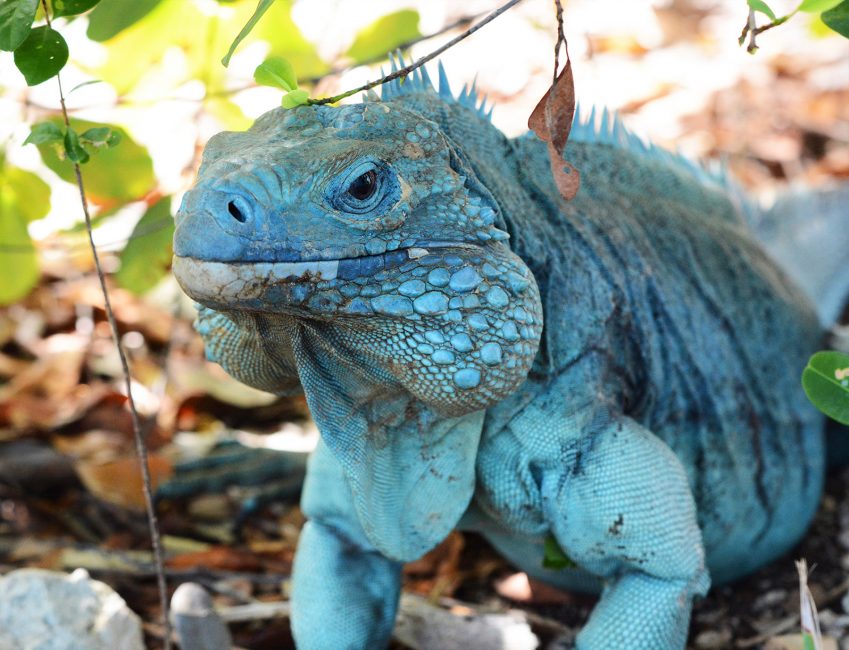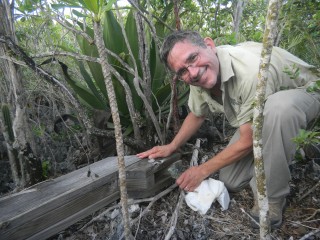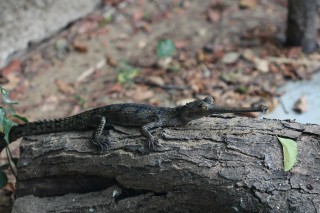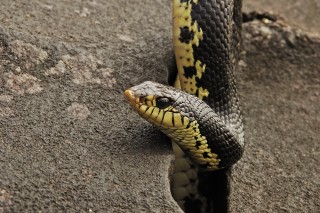
May 8, 2022
Sapphires of the Caribbean
- as seen by -
 Andrew Kathriner
Andrew Kathriner
As the sun beat down on me, sweat profusely flowing, I thought to myself how could anything survive out here? The Iron Shore of Grand Cayman easily ranks among some of the hardest terrains to navigate. With each step, I had to carefully balance on top of craggy limestone formations, and dodge prickly agaves and cacti, all while avoiding dehydration. So, what brought me to this inhospitable place where I crawled around the forest floor to avoid detection? The elusive Grand Cayman blue iguana (Cyclura lewisi).
It was the first week of March and the Blue Iguana Conservation (BIC) organization began its yearly population survey of the few blue iguanas left in the wild. This time of year coincides with breeding season and the males are at their brightest, firing up to the most incredible blueish hues to advertise their dominance against rivals and to attract receptive females. One would think that bright blue lizards would stand out in their rocky habitat, however, they are well aware of their surrounding environment, and if not spotted first, will dive into a rocky retreat at the first sound of disturbance. Seeing one of these endangered lizards (in 2001, there were fewer than 30 known individuals) is a rare spectacle. Fortunately, due to captive reproductive efforts and reintroductions by the BIC team and the National Trust of Grand Cayman (including partnerships with the Wildlife Conservation Society), their numbers have significantly rebounded.
In 2016, WCS’s Bronx Zoo World of Reptiles completed a new exhibit for blue iguanas. I had been eager to travel to Grand Cayman to help BIC with their comprehensive survey work as well as learn from the iguanas firsthand about habitat parameters that would be conducive to successful reproduction. Our Exhibit Production Department had done an incredible job recreating their world in ours at the zoo, putting emphasis on mimicking the natural limestone formations and creating opportunities for the lizards to maximize heat exposure.
In 2022, to ensure proper care at the zoo, I was able to collect accurate measurements of heat and light exposure and find out about positive social cues between male and female iguanas. Hopefully, in the near future, we can welcome the next generation of blue iguanas at the Bronx Zoo.
Be sure to visit our blue iguana exhibit at the zoo’s World of Reptiles. To learn more about blue iguanas and how you can help this unique lizard species, visit the Blue Iguana Conservation website.
EDITOR’S NOTE: May 8 marks the second annual International Blue Iguana Day to celebrate the efforts that have been made over many years to conserve them.
Nikon




Leave a Comment
Pingback: 30 Bold And Beautiful Animals That Start With B - Teaching Expertise
Jane Higgins
August 4, 2023 at 11:07 am
I live in St Thomas US Virgin Islands . I saw a blue iguana in my backyard yesterday. The toenails were bright turquoise. The skin was teal turquoise.
I did not get a picture. How did it get here ? We have plenty of green iguanas.